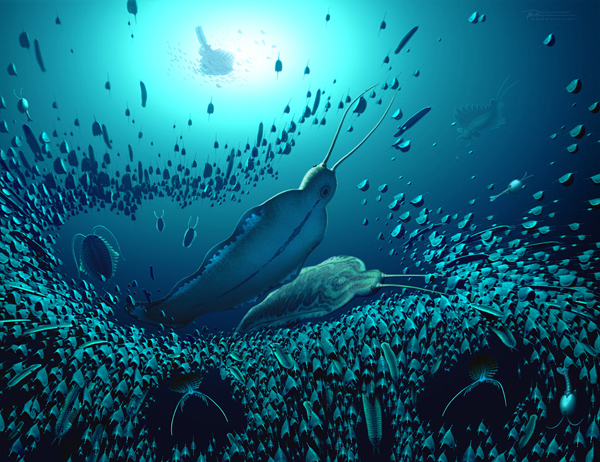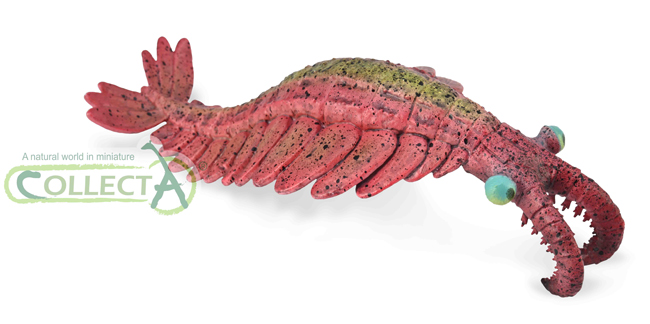Yesterday, Everything Dinosaur published an article about the newly described Cambrian marine worm Timorebestia (T. koprii).
Thought to be a stem chaetognath (arrow worm), Timorebestia may have been an apex, pelagic (active swimming) marine predator during the Early Cambrian. The authors of the scientific paper proposed that these marine worms may have been top of the food chain for millions of years. The evolution of arthropods, specifically the Radiodonta and predators like Anomalocaris may have led to their decline.
To read Everything Dinosaur’s article about Timorebestia koprii: Giant Predatory Marine Worms from the Cambrian of Greenland.
Examination of what was thought to be the gut of one specimen, revealed the remains of an arthropod (Isoxys). Hence, the theory that Timorebestia was an active predator placed high in the marine food web.
Amazing Artwork Depicting a Scene from the Cambrian
As part of the media release, a fantastic and dramatic artwork showing Timorebestia attacking a shoal of Isoxys was included. This illustration was produced by the very talented palaeoartist Bob Nicholls. A variety of taxa were included in the superb painting. These animals are associated with the fossil site, located in Greenland. The location is known as the Sirius Passet Cambrian Lagerstätte.

Picture credit: Bob Nicholls
A Key to the Other Marine Fauna in the Timorebestia Artwork
Such is the complexity of the artwork used to highlight a potential hunting strategy of Timorebestia, Everything Dinosaur team members decided to publish a helpful key. Readers and therefore identify the different animals feature in the painting.

Identifying the Prehistoric Animals
We have highlighted several of the marine prehistoric animals featured in the Bob Nicholls artwork.
The Key
1 = Timorebestia koprii (a pair of these stem chaetognaths), possibly apex predators in the water column.
2 = Siriocaris a primitive arthropod.
3 = Kiisortoqia a primitive arthropod.
4 = Kerygmachela a gilled lobopodian, probably closely related to the Radiodonta. It was probably a predator, but its mouthparts were very small indicating it probably ate animals much smaller than it.
5 = Kleptothule – an elongated trilobite.
6 = Isoxys – a primitive arthropod with semi-circular, bivalved carapaces. A very common fossil in the Sirius Passet Lagerstätte.
7 = Pauloterminus – an arthropod that resembled a shrimp.
8 = An amplectobeluid – an as yet, undescribed radiodont known from the Sirius Passet Lagerstätte. It was probably a predator and distantly related to Anomalocaris.
9 = Tamisiocaris a large radiodont that was probably a filter feeder.

To view the CollectA Prehistoric Life model range: CollectA Prehistoric Life Models and Figures.
A spokesperson from Everything Dinosaur praised the original artwork that accompanied the media release from Bristol University.
View the Everything Dinosaur website: Everything Dinosaur.






Leave A Comment